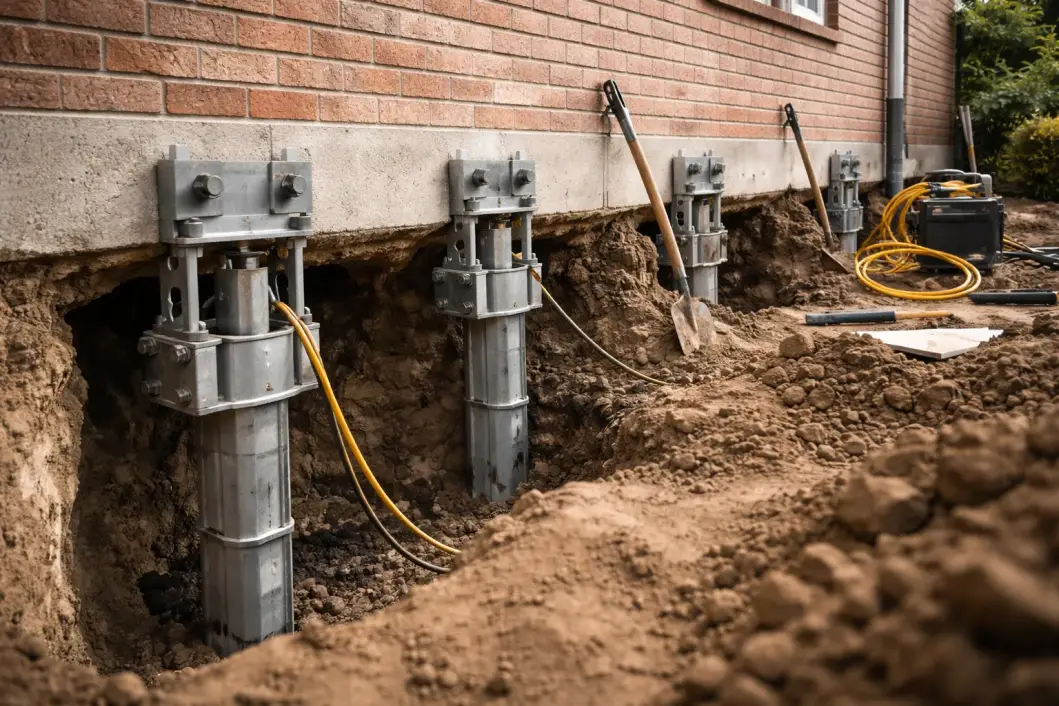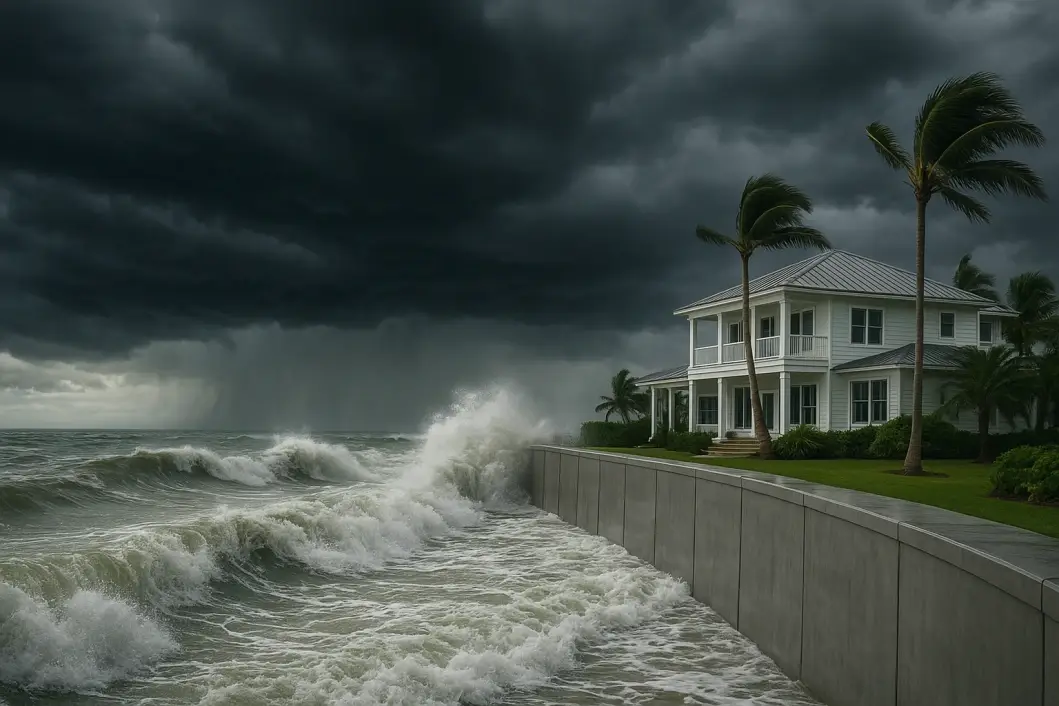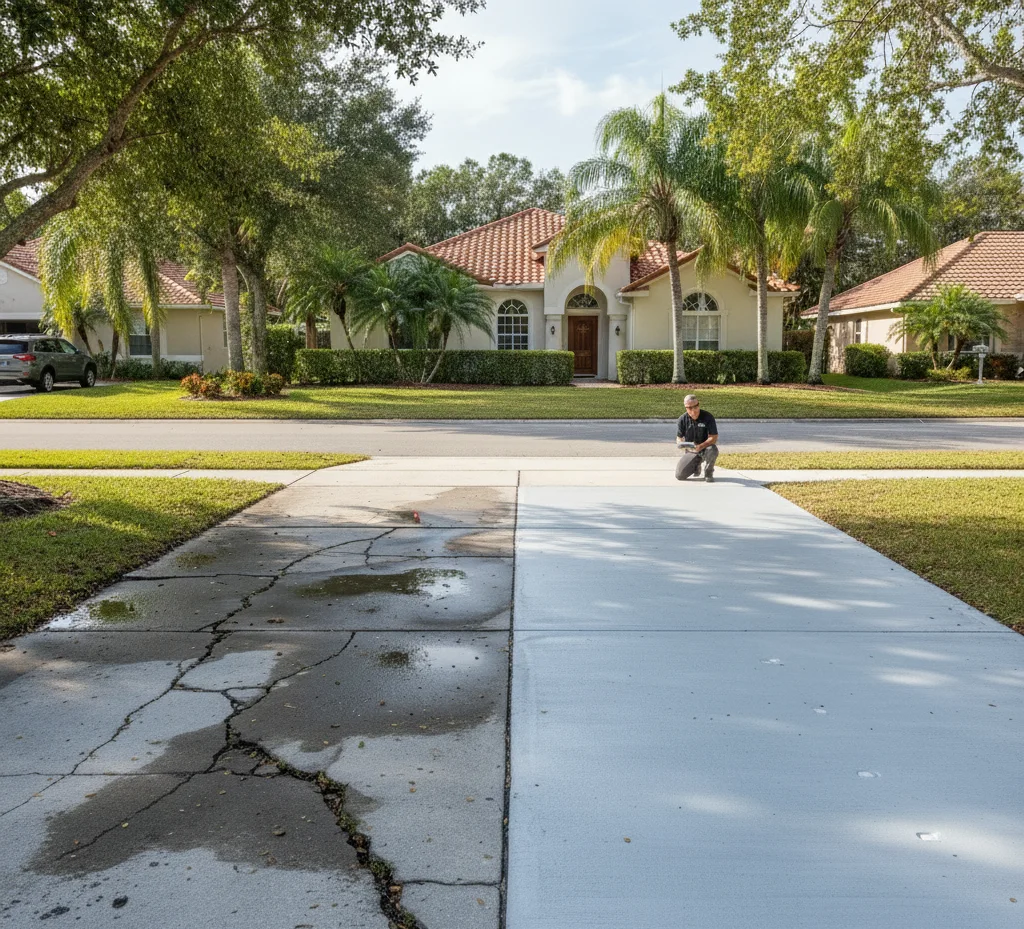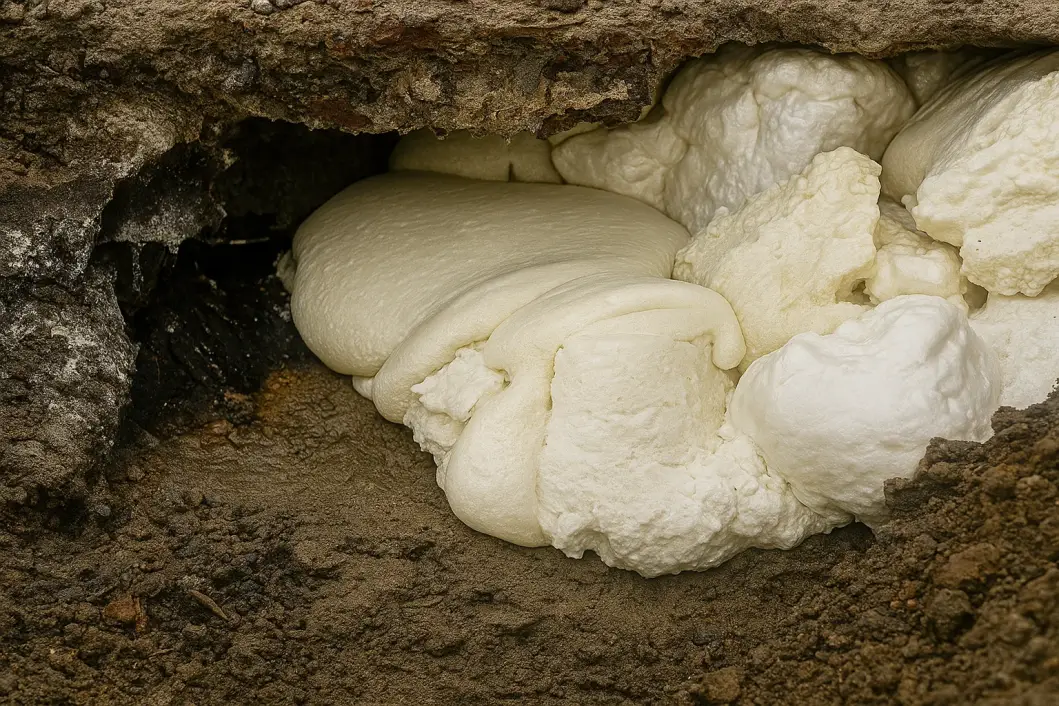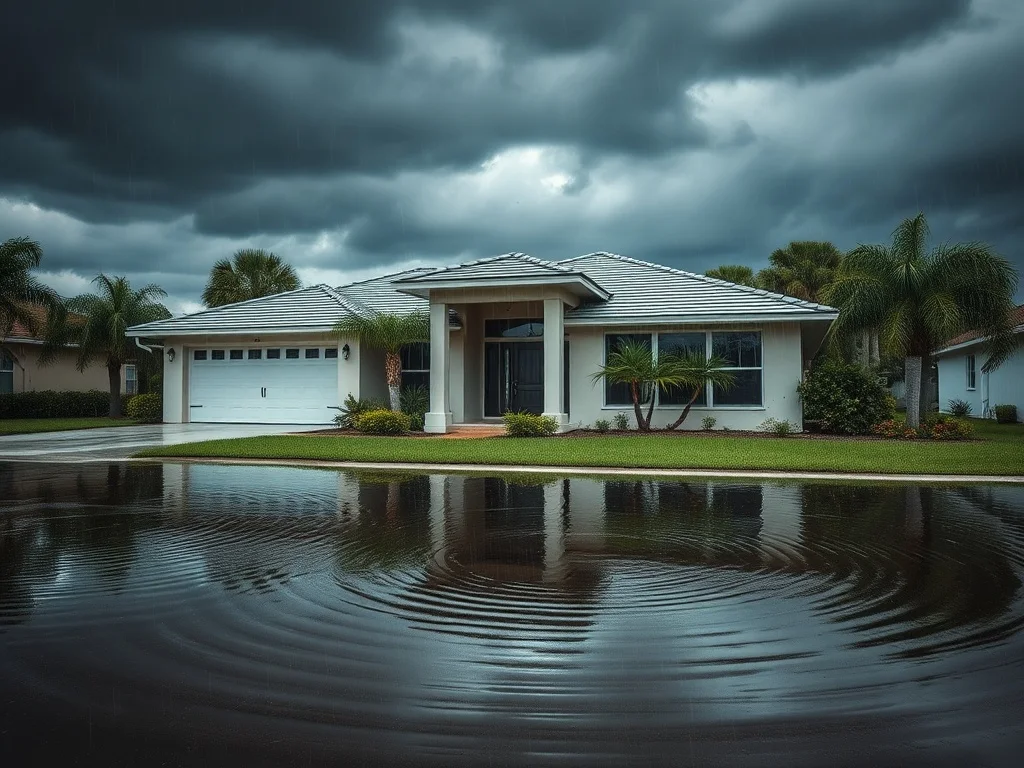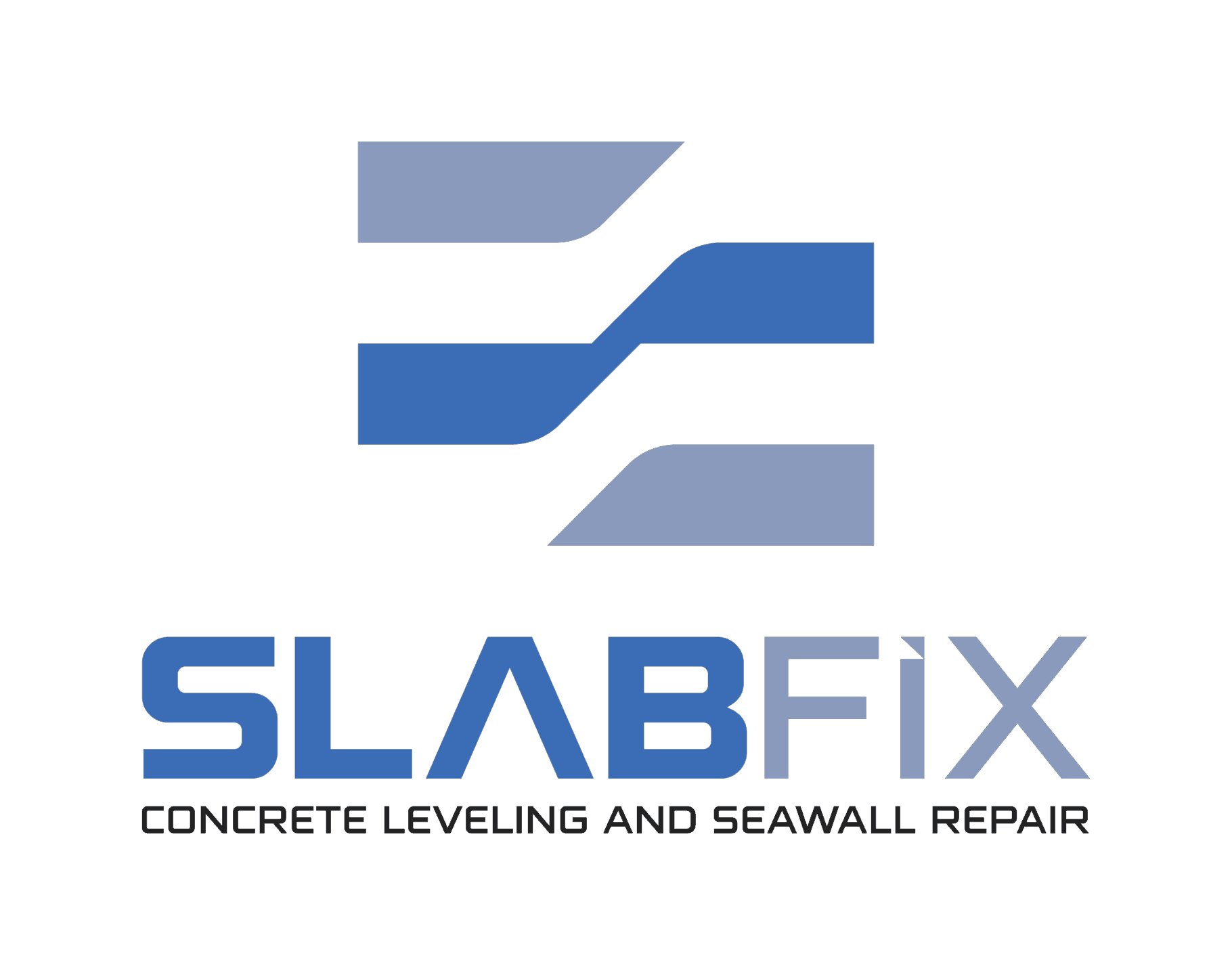Important Reasons to Fix Settled Concrete
Addressing the need to fix settled concrete is a common maintenance task often considered low priority by property owners. However, delaying repairs for damaged, sunken, or cracked concrete can lead to more significant and costly issues down the line. Here’s why prompt attention is crucial:
Drainage Issues Resulting in Foundation Damage
Settled concrete slabs can disrupt proper water drainage, causing water to accumulate in low spots during rain, snow, or freezing conditions. Prolonged exposure to moisture may lead to further sinking or cracking of concrete slabs and, more critically, foundation damage. Uncontrolled rainwater poses a serious threat to a property’s structural integrity. Repairing a damaged foundation is likely to be more expensive than addressing a cracked concrete slab promptly, making it a vital addition to your property repair priorities. Therefore, it’s essential to fix settled concrete before it leads to more severe damage.
Hazards and Liabilities
Cracked or settled concrete poses a significant trip hazard, emphasizing the critical nature of immediate repairs. Uneven surfaces increase the risk of slips, trips, and falls, potentially resulting in severe injuries. As the property owner, you could be held liable for injuries due to negligent maintenance. Addressing this issue promptly can prevent small problems from escalating into larger, more expensive concerns. To avoid these risks, it’s wise to fix settled concrete as soon as possible.
Property Value and Curb Appeal
Damaged concrete is not only unsightly but can also affect the overall aesthetics of your property. A poorly maintained exterior may reduce the property’s value and curb appeal, making it less attractive to potential buyers. Cracks and unlevel slabs may signal underlying problems, making it challenging to find interested buyers. Real estate experts often recommend repairing such issues before attempting to sell, ensuring your property maintains its value and attractiveness.
Repair Options
Minimally invasive and cost-effective solutions exist for repairing uneven or cracked concrete. Foam jacking is a popular option and non-disruptive process involving drilling small holes into the affected concrete slab to inject polyurethane material into underlying soil voids. This lifts the slab back to its original level, ensuring the property remains safe, structurally sound, and visually appealing.
Taking Action
Even if you’re not ready to address your concrete issues immediately, scheduling a consultation with a qualified concrete repair specialist such as Slab Fix is worthwhile. Contact us today for answers to your questions and a personalized quote tailored to the best solution for your specific slab issues. Addressing these concerns promptly can save you from more extensive and costly repairs in the future.
FAQs on Fix Settled Concrete
1. Why is it important to fix settled concrete promptly? Settled concrete can lead to drainage issues, foundation damage, trip hazards, and a decrease in property value. Prompt repairs prevent these problems from escalating into more significant and costly concerns.
2. How does settled concrete affect drainage and foundation? Settled concrete can disrupt proper water drainage, causing water to accumulate in low areas. Over time, this can lead to further sinking or cracking of the slabs and potentially cause damage to the foundation, compromising your property’s structural integrity.
3. What are the risks of not repairing cracked or settled concrete? Ignoring cracked or settled concrete increases the risk of slips, trips, and falls, posing a significant liability to property owners. Additionally, it can reduce your property’s curb appeal and value.
4. How can damaged concrete impact my property’s value? Damaged concrete is unsightly and can negatively affect your property’s aesthetics, making it less attractive to potential buyers. It may also indicate underlying issues, making it harder to sell your property at its full value.
5. What repair options are available for settled or cracked concrete? Minimally invasive solutions like foam jacking are available. This process involves injecting polyurethane material into the underlying soil to lift the slab back to its original level, restoring safety and structural integrity.

